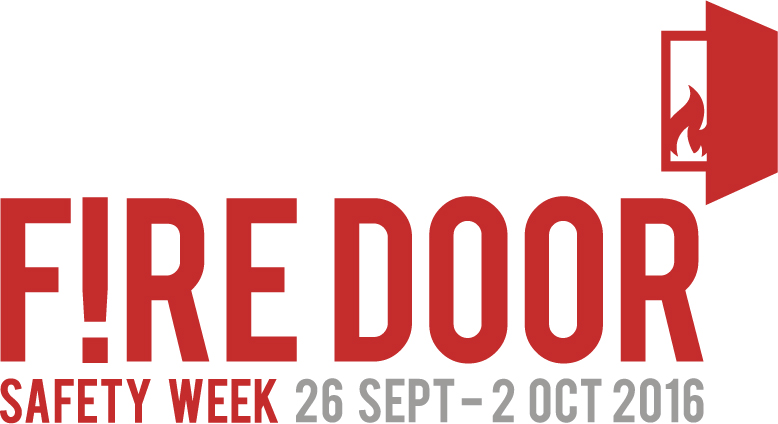The Dangers of Faulty Fire Doors
Fire Doors are an essential part of staying safe whilst we sleep. Discover how so many of us get it very very wrong.
Since it was launched in 2013, by the British Woodworking Federation (BWF), the BWF Fire Door Alliance (an evolution of the BWF CERTIFIRE scheme) and the Fire Door Inspection Scheme (FDIS), Fire Door Safety Week has grown immensely in its journey towards highlighting “the critical importance of properly specified, installed and maintained fire doors and associated products.”
In 2019, the “Fire Door Safety Week campaign focuses upon the critical role fire doors play in protecting us when we are asleep; when we are at our most vulnerable.”

Having reliable smoke detectors in your home is crucial to ensuring that your family is alerted to fire especially at night when they are less likely to pick up on the signs by themselves. However, if you live in a house of multiple occupancies (HMO), such as a block of flats, being alerted of a fire isn’t always enough, particularly if you live on a higher floor and especially if there is a ‘Stay Put’ fire evacuation strategy.
Why does the ‘Stay Put’ strategy still exist?
In the aftermath of Grenfell, a lot of people have questioned why the ‘Stay Put’ strategy still exists. There are a variety of reasons, including:
- The taller a building is, the more residents there are that need evacuating. However, if everyone were all to leave at the same time, they could block the main stairwells, which could prevent firefighters from reaching and slowing the progression of the fire.
- It is sometimes safer for residents to remain in their homes than to run through or near the location of the fire.
- HMOs are designed to have fire doors that protect properties for 60-minutes, which should give plenty of time for firefighters to get a fire under control and to a level that is safer for residents to evacuate.
Unfortunately, this last point is only possible if adequate fire doors are in place. This includes ensuring that:
- Appropriate fire doors and accessories are purchased and that they are installed correctly.
- Regular inspections are undertaken to ensure fire doors and accessories are in prime condition.
- Any problems are rectified effectively.
Article 17 of the Fire Safety Order states that it is a legal requirement that fire doors are installed and adequately maintained to ensure that they remain fit for purpose. As such, building owners could face prosecution if fire doors are found to be in breach of legislation.
If problems are not rectified appropriately, fire doors are not going to be able to protect families.
The most common door faults include:
- Missing or incorrectly installed fire or smoke seals. This is a problem because these seals are designed to prevent hot gases and smoke from flooding an area. Therefore, if they are faulty, toxic and life-threatening smoke and gas are likely to pass into your home.
- Excessive gaps between the doors and its frame. Gaps also create space for smoke and fire to pass through, which could speed up the spread of fire and further endanger life.
- Unsuitable hinges. According to the BWF, 1-in-5 fire doors have unsuitable hinges. However, hinges are designed to fit a fire door correctly, therefore, if the wrong hinges are used, a door will be loose in the door frame meaning that it won’t close properly
- Incorrect Glass. It is essential that any glazing in doors is fire-rated because the non-fire-rated glass will crack and eventually shatter when exposed to high temperatures of fires. This will allow the fire to spread quickly.
- Damage to the Door Leaf. The damage will weaken the door, potentially creating gaps in the structure that will allow fire and smoke to surge through and into your home.
- Voids created by ironmongery. Sometimes it is necessary to remove and replace ironmongery, such as locks on a fire door, especially if it is a front door. However, this creates a void that compromises the level of fire resistance the door can offer.
Unfortunately, human error is also a worrying problem when it comes to ensuring fire doors work effectively, with the biggest problem occurring when fire doors are propped or wedged open. There are, of course, occasions when this might be necessary, for example, when you are moving large and/or heavy equipment through a doorway. Nevertheless, it is crucial to the safety of your family that fire doors are not left like this for an extended period, especially overnight, when we are at our most vulnerable.
For more help and advice, here are a couple of reading recommendations from the Fire Door Safety Week website:
For more information about the Fire Door Safety Week, what it is and how you can get involved, please check out their website.
Recent Posts
-
Build a Garden Structure
Building your own garden structure is easier than you may think and so rewarding. Deciding w
-
Forest Garden’s top tips for bringing style to small outdoor spaces
Spring is finally here, and homeowners are keen to transform even the smallest of outside areas


